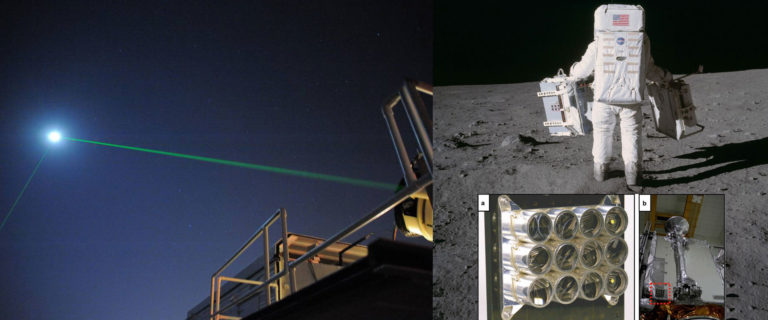For the last decade, scientists at NASA have been taking aim with laser beams at a tiny reflector on the moon. Around 240,000 miles away, the panel—the size of a paperback novel—suddenly fired one back.
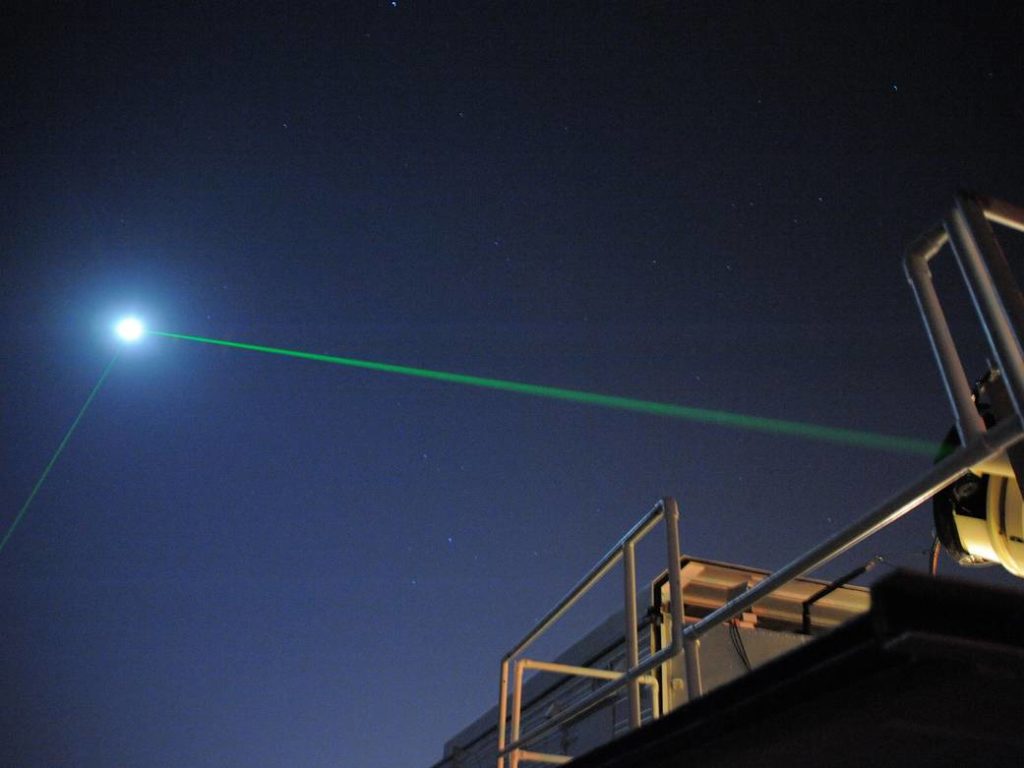
This photograph shows the laser-ranging facility at the Goddard Geophysical and Astronomical Observatory in Greenbelt, Md. The facility helps NASA keep track of orbiting satellites. Both beams shown, coming from two different lasers, are pointed at NASA’s Lunar Reconnaissance Orbiter, which is orbiting the Moon. Here, scientists are using the visible, green wavelength of light. The laser facility at the Université Côte d’Azur in Grasse, France, developed a new technique that uses infrared light, which is invisible to the human eye, to beam laser light to the Moon. | Credits: NASA
Download image here
This reflector is mounted on the Lunar Reconnaissance Orbiter (LRO), a spacecraft that has been orbiting and studying the Moon since 2009. Its place was always meant to serve as a target, so scientists could test the reflecting power of panels previously left on the Moon around five decades ago.
Experiments like these have taken place ever since the Apollo era and are pretty simple: shoot a laser beam at the surface, and see how long it takes to come back.
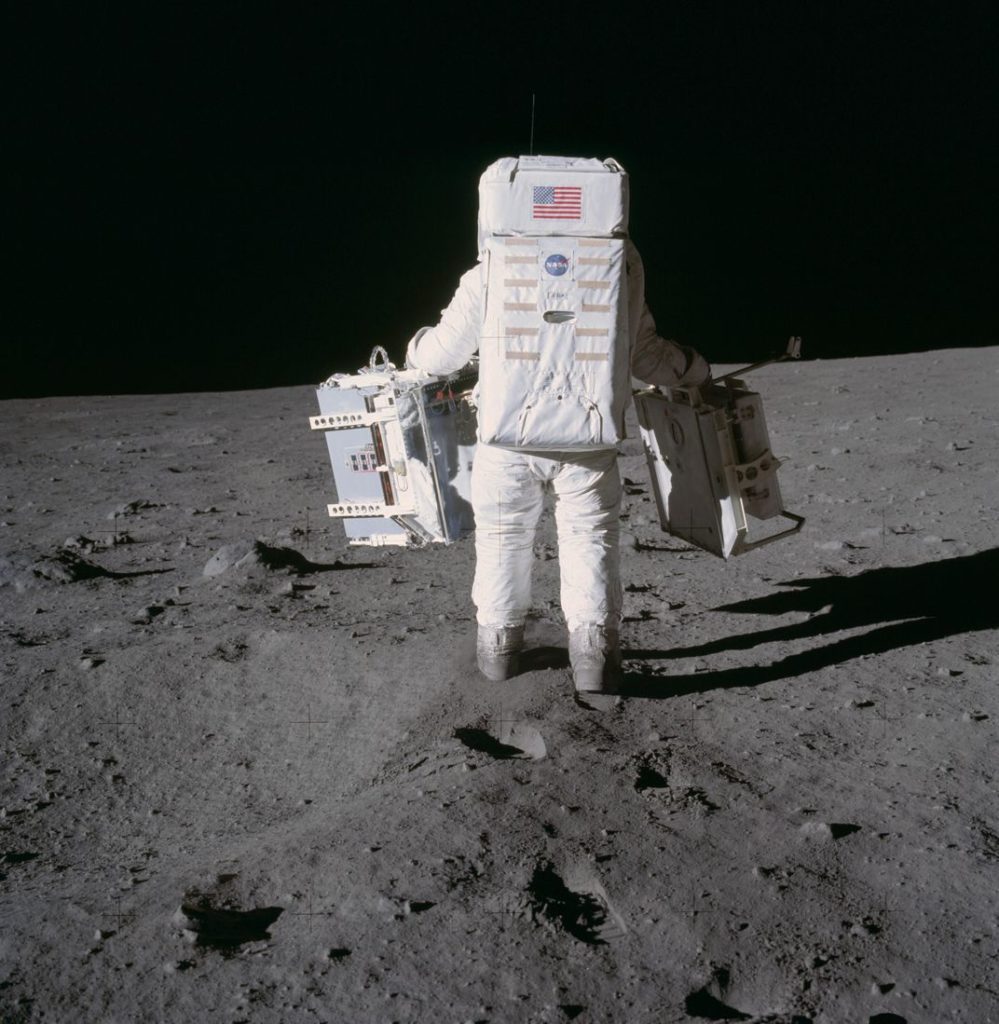
Astronaut Edwin E. Aldrin Jr., lunar module pilot, deploys two components of the Early Apollo Scientific Experiments Package on the surface of the Moon during the Apollo 11 extravehicular activity in 1969. A seismic experiment is in his left hand, and in his right is a laser-reflecting panel. Astronaut Neil A. Armstrong, mission commander, took this photograph.
Credits: NASA’s Johnson Space Flight Center
Download image here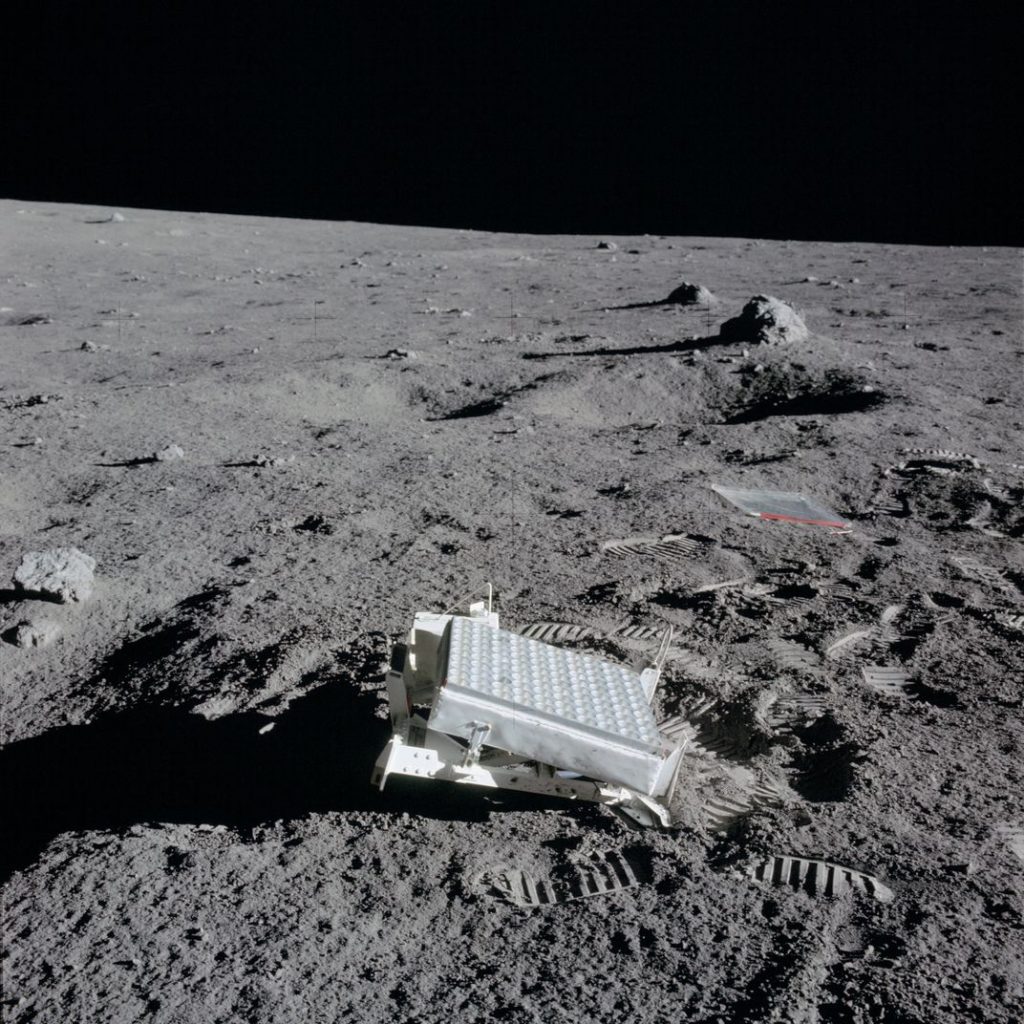
A close-up photograph of the laser reflecting panel deployed by Apollo 14 astronauts on the Moon in 1971.
Credits: NASA
Download image here
By measuring the time it takes laser light to bounce back after reflected—an average of around 2.5 seconds—researchers can calculate the distance between the starting point on Earth and the reflectors on the Moon with an accuracy of just a few millimeters.
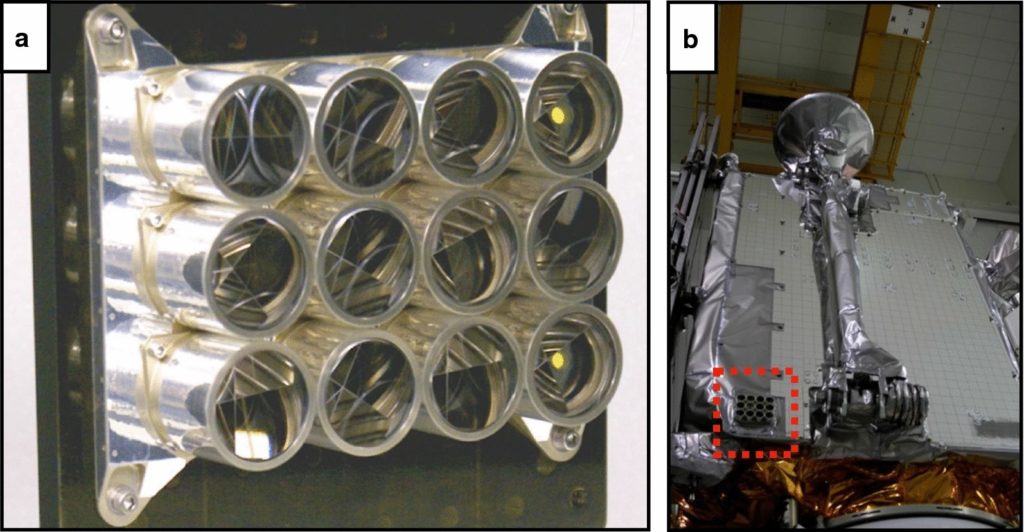
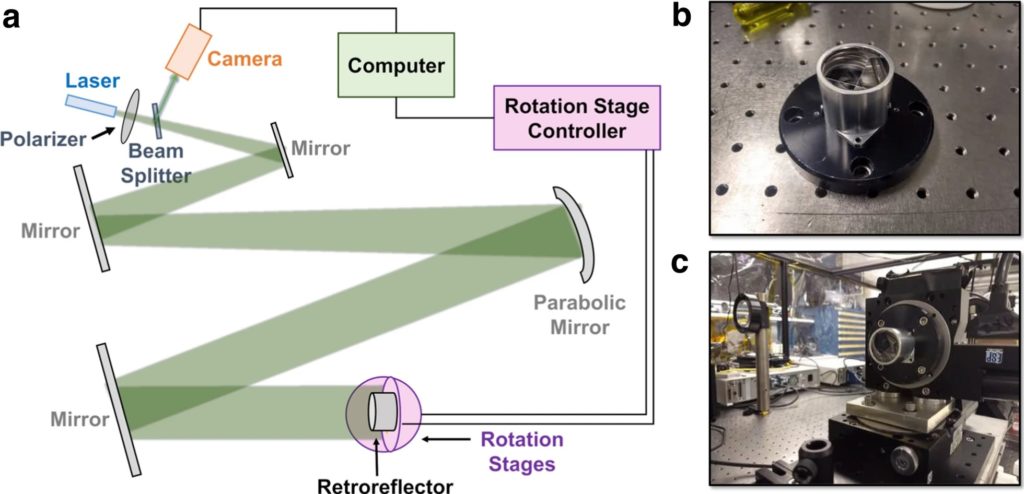
And the results have been no short of fascinating. NASA published its findings in the journal Earth, Planets, and Space, writing that through these measurements, it’s been able to learn that the Earth and the Moon are slowly drifting apart, moving about 1.5 inches further every year due to gravity.
A total of five reflecting panels are currently sitting on the Moon, three having been delivered by Apollo crews in the early 1970s and two in the form of Soviet rovers.
However, they’re all around 50 years old each, and researchers are speculating that dust may have kicked up and settled over them. As well as blocking light, the dust also insulates them, causing them to potentially overheat.
“Now that we’ve been collecting data for 50 years, we can see trends that we wouldn’t have been able to see otherwise,” states Erwan Mazarico, a planetary scientist from NASA’s Goddard Space Flight Center, in the news release. “Laser-ranging science is a long game,” he adds.
By using the reflector on the LRO and comparing the resultant discrepancies from the results gleaned from the quintet on the Moon, the team is hoping to be able to narrow down the reason why they’ve stopped functioning so well. Computer models will reveal if dust is responsible, or an unknown “something else.”




